Tooltips
A tooltip is a brief, informative message that appears when a user interacts with an element in a graphical user interface (GUI). In DVT tooltips are initiated through a mouse-hover gesture.
The below table highlights all the available areas from where tooltips can be triggered:
Code |
Place the mouse cursor over an identifier in the editor. The tooltip will display information about the element under cursor including: the comment associated with the element’s declaration (written above or inline), or the LRM documentation for predefined API 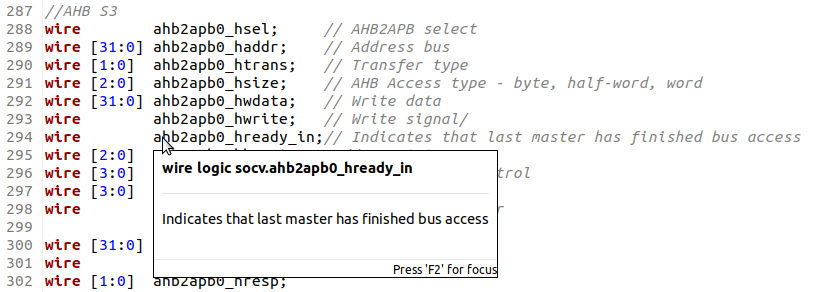
the scoping information for types (enclosing package) 
the full signature of methods 
the direction of ports 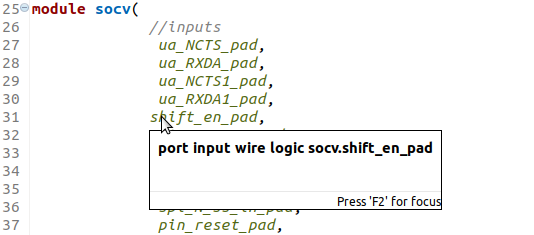
Tooltips are available for all the types, methods, fields, macros, etc. from the source code files that DVT analyzes in your project. |
Folded regions |
Place the mouse cursor over the + sign of a folded code region. The tooltip will display the folded region contents: 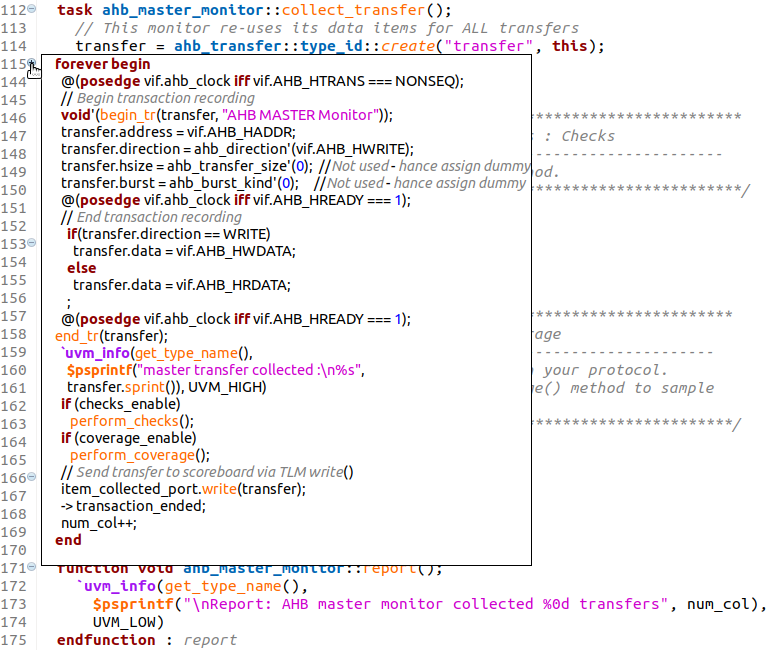
|
Macros Values |

|
Parameter Values |

|
Override indications |
Place the mouse cursor over an override annotation on the left vertical ruler. The tooltip will display the overridden method signature. 
|
Problems |
Place the mouse cursor over an error or warning annotation on the left vertical ruler of the editor. The tooltip will display the error or warning message: 
If multiple problems are reported on the same line, an annotation list is displayed: 
|
WaveDrom Diagrams |
Place the mouse cursor over a JSON waveform description written inside a comment. The tooltip will display WaveDrom Timing Diagrams, if the descriptions are compliant with the WaveDrom library standard: 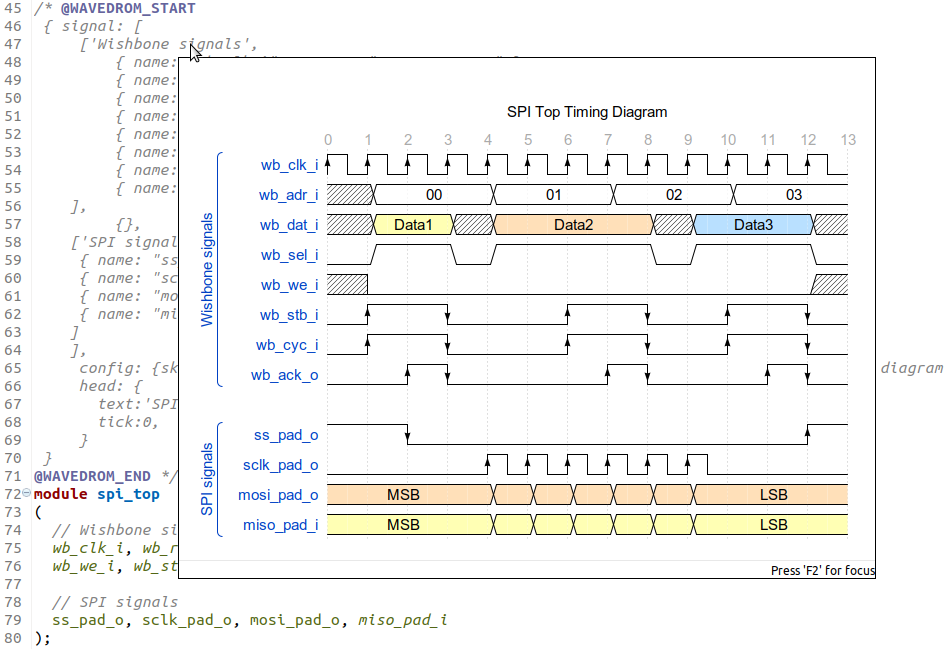
|
UVM Register Bit Field Diagrams |
Place the mouse cursor over an UVM register class. The tooltip will display bit field diagrams, by parsing the UVM configuration methods: 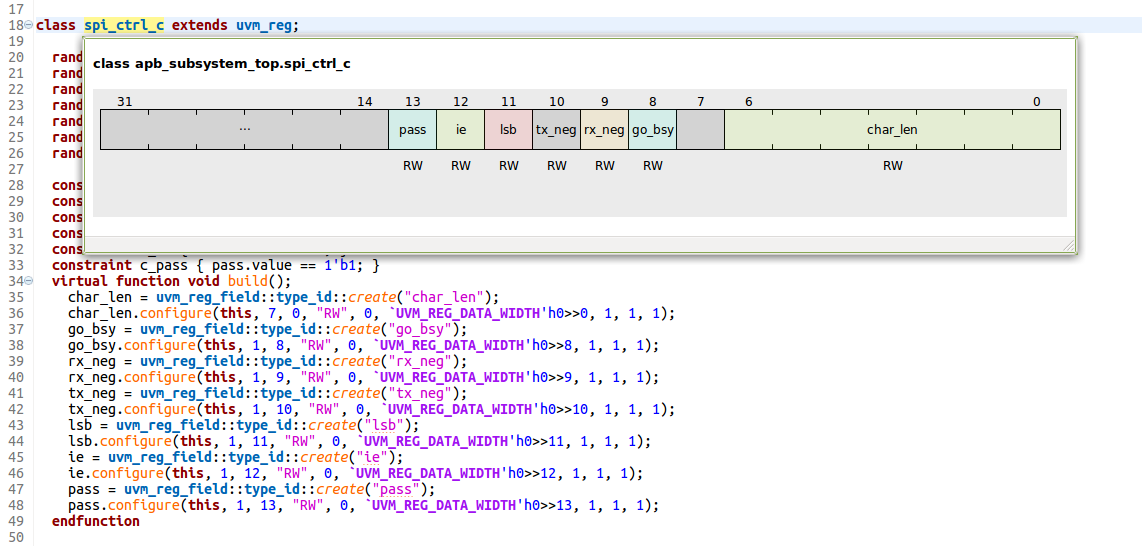
|
Method Call Arguments Mapping
Macro Call Arguments Mapping
Ordered Parameter Mapping
Ordered Port Connection Mapping
|
Place the editor cursor on a method call argument and press Ctrl+Shift+Space. The tooltip will list all the method declaration arguments along with their name, type, direction and default value. Move the editor cursor using the arrow keys to inspect argument mapping - the argument under cursor is always highlighted in boldface: 
The same functionality is available for macro calls, instance parameter connections and instance port connections: 


|